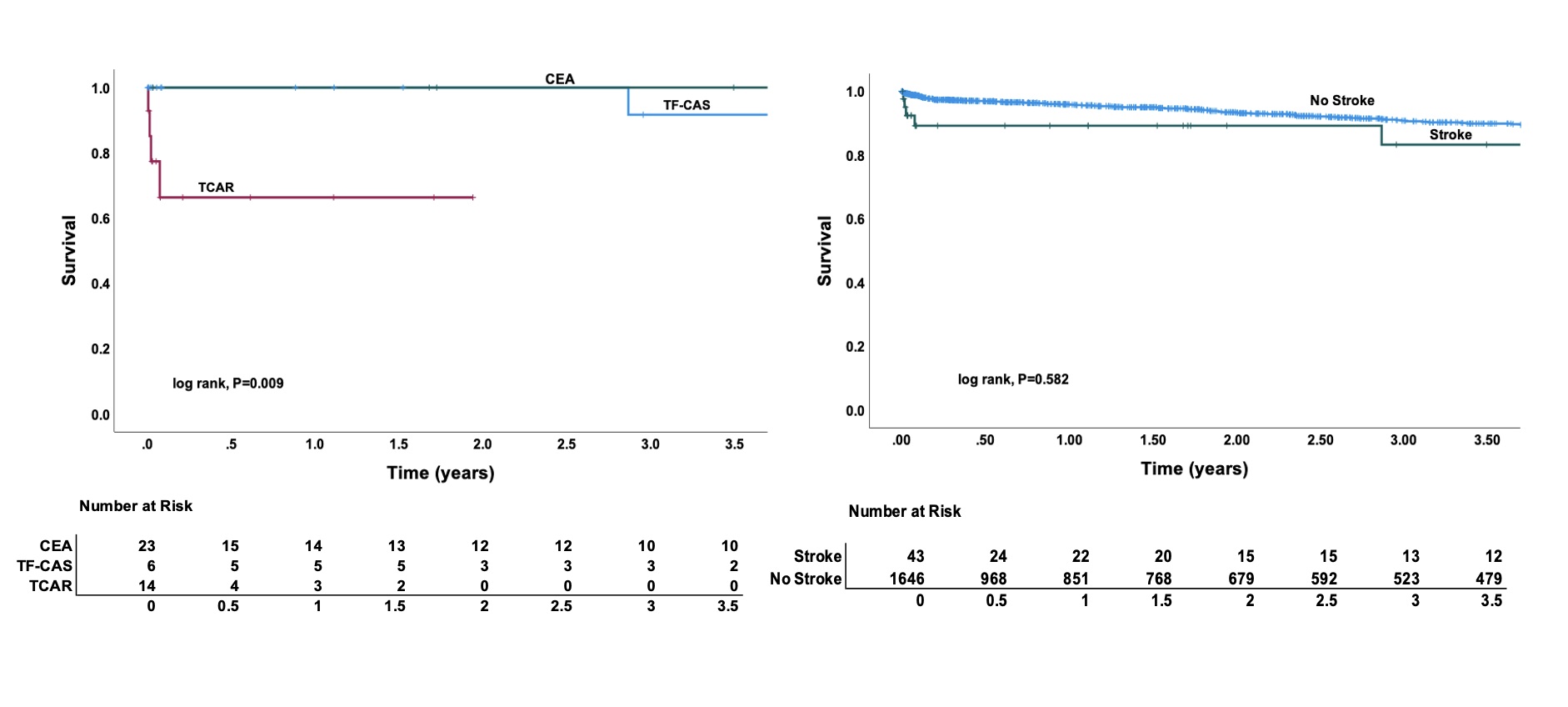Impact of Intraoperative Stroke on Survival Across Carotid Treatment Modalities: Carotid Endarterectomy, Transfemoral Carotid Stenting, and Transcarotid Artery Revascularization
Alexander Mills, Samuel Leonard, Regina Husman, Shihuan Keisin Wang
McGovern Medical School @ University of Texas, Houston, Houston, TX
INTRODUCTION: Perioperative stroke is the most dreaded complication of carotid artery interventions and can severely affect a patientsí quality of life. This study evaluated the impact of intraoperative stroke on mortality for patientís undergoing surgical treatment of carotid artery stenosis with three different treatment modalities.
METHODS: A total of 1689 patients underwent surgical intervention for carotid artery stenosis at two large-volume institutions between 2015 and 2022. These patients underwent one of three treatment modalities: carotid endarterectomy (CEA), transfemoral carotid stenting (TF-CAS) and transcarotid artery revascularization (TCAR). Perioperative outcomes including stroke and mortality and follow-up survival data at 6, 12, 18, 24, 30, and 36 months were analyzed and stratified per treatment modality using descriptive statistics as well as Kaplan-Meier analysis.
RESULTS: Of the 1689 patients identified, 997 underwent CEA (59%), 167 underwent TF-CAS (10%), and 525 underwent TCAR (31%). The overall intraoperative stroke rate was 2.6% (CEA 2.4%, CAS 3.6% and TCAR 2.7%; p=0.607). Overall mortality did not differ between those patients who suffered from an intraoperative stroke compared to those who did not (Figure). However, 6-month survival in patients who had no intraoperative stroke was 96% compared to 89% in patients with intraoperative stroke (p=0.682). This clinical difference was sustained throughout the follow-up period: 95% vs 88% at 12 months, 93% vs 87% at 18 months, 91% vs 83% at 24 months, 89% vs 83% at 30 months and 86% vs 76% months. Within the cohort of patients who suffered from an intraoperative stroke, there was a significant difference in survival noted in the TCAR group with 95% survival at 6-months in the non-affected patients compared to 57% in those suffering from intraoperative stroke (Figure; p=0.09). Additionally, all events of death were within 2 years in this subgroup.
CONCLUSIONS: Intraoperative stroke during carotid interventions significantly impacts early patient survival with otherwise no apparent change in long-term outcomes. This difference appears to be even more significant in patients undergoing TCAR possibly because of their baseline higher-risk profile and lower functional reserve which made them candidate for TCAR over CEA in the first place. 
Back to 2023 Display Posters


